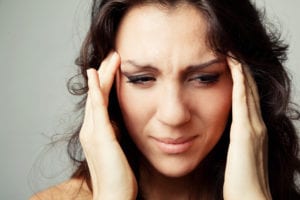Written by Joyce Smith, BS. Migraine frequency was significantly decreased with the use of medical marijuana.
 Cannabis is made up of more than 400 compounds of which more than 60 are cannabinoids (CBs). The most psychoactive is Δ9-tetrahydrocannabinol (THC). Cannabidiol, a common cannabinoid (CB), represents 40% of phpytocannabinoids and, along with THC, is a primary ingredient of medical marijuana.1 Located throughout the central and peripheral nervous and immune systems of the body is the endocannabinoid system, which consists of endogenous CBs and receptors that maintain homeostasis throughout the body.2 When these CB receptors of our endocannabinoid system are activated by the phytocannabinoids THC and CBD, they may exert anti-inflammatory and pain-relieving effects. 2-4
Cannabis is made up of more than 400 compounds of which more than 60 are cannabinoids (CBs). The most psychoactive is Δ9-tetrahydrocannabinol (THC). Cannabidiol, a common cannabinoid (CB), represents 40% of phpytocannabinoids and, along with THC, is a primary ingredient of medical marijuana.1 Located throughout the central and peripheral nervous and immune systems of the body is the endocannabinoid system, which consists of endogenous CBs and receptors that maintain homeostasis throughout the body.2 When these CB receptors of our endocannabinoid system are activated by the phytocannabinoids THC and CBD, they may exert anti-inflammatory and pain-relieving effects. 2-4
Only five case reports have described patients who have used marijuana and experienced a decrease in migraine headaches 5. No clinical trials exist that demonstrate the effect of marijuana on migraine headache, thus Rhyne et al, in 2016, reviewed data from 121 adults diagnosed with migraines to determine the effects of medical marijuana on the monthly frequency of their migraine headaches.
These adults received migraine or prophylactic treatment with medical marijuana between January 2010 and September 2014 at Gedde Whole Health, a private medical practice in Colorado that specializes in treatment with medical marijuana. Eighty-two (67.8%) participating patients had a history of cannabis use or were currently using it at the time of their initial visit. The primary outcome was the mean number of migraines per month at the initial and follow up visits. Secondary outcomes were the type and dose of marijuana used, current and adjunctive migraine therapies, and patient-reported effects of marijuana use.
Marijuana use decreased migraine headache frequency from a mean of 10.4 to 4.6 headaches per month (p<0.0001); a decrease that was both statistically and clinically significant. Of the 121 patients studied, 103 (85.1%) reported a decrease in monthly migraines, 15 (12.4%) patients reported the same number of migraines per month, and 3 patients had an increase of 3 headaches per month. Researchers found that the types of marijuana use varied, with many patients using more than one form and using it daily as a preventative strategy (19.8%). The inhaled forms of marijuana were used most frequently as an acute strategy to alleviate the symptoms of migraine attacks, while edible cannabis, which takes longer to impact the body, was used prophylactically as a headache preventative measure. Negative effects were experienced by 14 patients. These effects involved sleepiness and difficulty controlling the timing and dose of marijuana.
An important study limitation was the retrospective study which did not prove causality. Future randomized, placebo -controlled clinical trials with a marijuana washout period preceding the study are recommended. Future studies should also include different strains, formulations, and doses of marijuana to provide a better understanding of potential long-term effects of medical marijuana on migraine treatment and prevention.
Source: Rhyne, Danielle N., Sarah L. Anderson, Margaret Gedde, and Laura M. Borgelt. “Effects of medical marijuana on migraine headache frequency in an adult population.” Pharmacotherapy: The Journal of Human Pharmacology and Drug Therapy 36, no. 5 (2016): 505-510. 2016 Pharmacotherapy Publications, Inc.
© 2016 Pharmacotherapy Publications, Inc.
Posted February 11, 2019.
Joyce Smith, BS, is a degreed laboratory technologist. She received her bachelor of arts with a major in Chemistry and a minor in Biology from the University of Saskatchewan and her internship through the University of Saskatchewan College of Medicine and the Royal University Hospital in Saskatoon, Saskatchewan. She currently resides in Bloomingdale, IL.
References:
- Guzman M. Cannabinoids: potential anticancer agents. Nature reviews cancer. 2003;3(10):745.
- Russo EB. Clinical endocannabinoid deficiency (CECD): can this concept explain therapeutic benefits of cannabis in migraine, fibromyalgia, irritable bowel syndrome and other treatment-resistant conditions? Neuro endocrinology letters. 2008;29(2):192-200.
- Russo EB, Grotenhermen F. The Handbook of Cannabis Therapeutics: From Bench to Bedside. Routledge; 2014.
- Baron EP. Comprehensive review of medicinal marijuana, cannabinoids, and therapeutic implications in medicine and headache: what a long strange trip it’s been…. Headache: The Journal of Head and Face Pain. 2015;55(6):885-916.
- Mikuriya T. Chronic Migraine Headache: Five Cases Successfully Treated with Marinol and/or Illicit Cannabis. 1991; Cannabis for migraine. Available at: http://druglibrary.org/schaffer/hemp/migrn1.htm. Accessed February 7, 2019, 2019.
